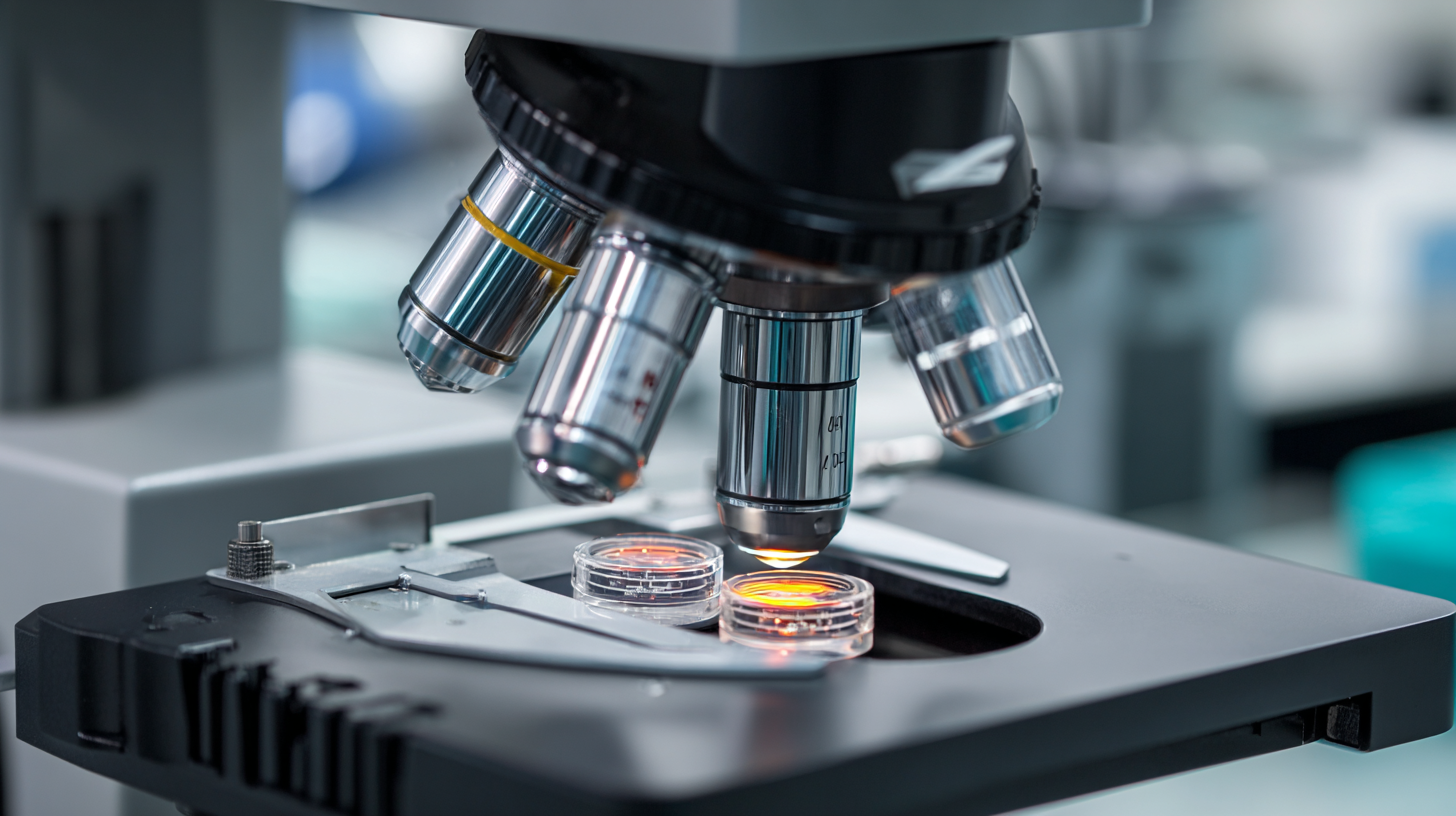- Home Page
- Company Profile
-
Our Products
- Microscope
- CONFOCAL MICROSCOPES
- Trinocular Upright Metallurgical Microscope
- Portable Grooved Metallurgical Microscope
- Cell Culture Imaging System
- Metallurgical Microscope
- Projection Microscope
- Student Stereo Microscope
- BINOCULAR STEREO ZOOM MICROSCOPE
- PCB Inspection Video Stereoscope Microscope
- SPINNERET MICROSCOPE
- Penta Head Microscope/ Multi view Head Microscope
- Research Polarising Microscope
- Senior Dissecting Microscope
- Dissecting Microscope
- Motorized Comparision Microscope
- Sieves Digital Microscopes
- Advance Inverted Tissue Culture Microscope
- Advance Stereo Zoom Microscope
- Student Projection Microscope
- Inverted Metallurgical Microscope
- Measuring Microscope
- Digital Spinneret Inspection Microscope
- Portable Inverted Tissue Culture Microscope
- Binocular Inverted Tissue Culture Microscope
- Student Compound Microscope
- Trinocular Stereozoom Microscope
- Advanced Research Microscope
- Gemological Microscope
- Polarizing Projection Microscope
- Senior Inspection Spinneretscope
- Confocal Microscope
- Senior Projection Microscope
- Toolmaker's Microscope
- Research Microscope
- Stereo Inspection Microscope
- Student Medical Microscope
- Digital Biological Microscope RXLr-4D
- Toolmaker Microscope Large
- Stereo Inspection Scope
- Trinocular Research Microscope
- Portable Metallurgical Microscope
- Binocular Research Microscope
- Student School Microscope
- Inverted Tissue Culture Microscope
- Projection Microscope
- Laboratory Microscope
- Decca Head Microscope
- Advanced Research Material Microscope
- Microtomes
- Semi Automatic Rotary Microtome
- Senior Precision Rotary Microtome
- Rocking Microtome
- Rotary Microtome Erma Type
- Freezing Microtome
- Fully Automatic Rotary Microtome
- Manual Rotary Microtome RMT-25
- Advance Rotary Microtome
- Hand Table Microtome
- Knife Sharpener Microtome
- Sliding Miocrotome
- Slide Staining Machine
- Rotary Microtome
- CRYOSTAT MICROTOME
- Optical Instruments
- Tissue Processor Machine
- Microscope Accessories
- Histopathological Equipment
- Lab Instrument
- Radical Digital Turbidity Meter
- Radical Microprocessor Dissolved Oxygen Meter
- Digital Photo Colorimeter
- Tap Density Tester
- Serological Water Bath
- Magnetic Stirrer
- Dual Channel Flame Photometer
- pH or mv or Conductivity
- Round Centrifuge
- Radical Disintegration Test Apparatus
- Digital Slide Scanner
- Precision Water Bath
- Incubator Shaker Water Bath
- Hemoglobin meter
- Microprocessor Colony Counter
- PASS BOX DYNAMIC
- Radical Microprocessor Colony Counter
- Bulk Density Apparatus
- Laboratory Rectangular Hot Plates
- Tablet Dissolution Test Apparatus
- Hemoglobin Meter (Sahli's)
- Micro Centrifuge 16000 R.P.M.
- Revolutionary General Purpose Digital Centrifuge
- Vortex Shaker
- Rectangular Water Bath
- Heating Mantel
- Digital Spectrophotometer
- Haematocrit Centrifuge
- Water Distillation with Metal Heater
- Hand Specimen Leveler Press
- GROSSING TABLE
- COOLING PLATE
- MICROPROCESSOR PH METER
- DIGITAL FLAME PHOTOMETER
- pH/mV/TEMPERATURE TESTER
- DIGITAL PH, CONDUCTIVITY & TEMPERATURE METER
- Radical Auto Karl Fischer Titrimeter
- Stereo Zoom Microscope
- Jewellery Making Microscope
- Binocular Stereo Microscope
- Advanced Stereo Zoom Microscope
- Articulated Trinocular Stereo Zoom Microscope
- Digital 3D Inspection Microscope
- Binocular Stereo Microscopes
- Motorized Stereo Microscopes
- Trinocular Microscope
- Stereo Inspection Microscope
- Stereo Microscope
- Digital 3D Inspection Microscope RSZ-3D
- Stereo Zoom Microscope RSM-8
- Polarising Microscopes
- Lab Consumables
- Profile Projector
- Optical Profile Projector
- Vertical Profile Projector
- Profile Projector RPP-500
- Profile Projector
- PROFILE PROJECTOR
- Universal Profile Projector
- Bench Type Profile Projector
- Charpy Profile Projector
- High Sharpness Profile Projector
- Profile Projector
- Horizontal Profile Projector
- Digital Profile Projector
- Radical Profile Projector
- Coaxial Profile Projector
- Anotomy Model
- Metallurgical Microscope
- Microscope
- Contact Us

Global Demand for Best Tissue Culture Microscopes Driven by China's Quality Manufacturing Revolution
The global demand for Tissue Culture Microscopes is witnessing unprecedented growth, significantly fueled by China's quality manufacturing revolution. According to a report by MarketsandMarkets, the global microscopy market is expected to reach $6.9 billion by 2024, growing at a CAGR of 7.4% during the forecast period. This surge is primarily attributed to advancements in life sciences and the increasing need for precise microscopy tools in research and clinical diagnostics. China's strategic investments in enhancing its manufacturing capabilities, coupled with its focus on quality control, have positioned it as a leader in producing high-performance Tissue Culture Microscopes. As scientific research continues to advance, the importance of reliable and sophisticated microscopy solutions in tissue culture applications becomes paramount, driving innovation and growth in this specialized segment of the market.

Table of Contents
[Hide]
The Rise of China in Tissue Culture Microscope Manufacturing
The rise of China in tissue culture microscope manufacturing is a remarkable transformation driven by advancements in technology and quality control practices. According to a recent market analysis, China's share in the global tissue culture microscope market has surged, currently accounting for over 30% of total production. This shift is attributed to a combination of increased investment in research and development and the establishment of stringent manufacturing standards, positioning Chinese manufacturers as formidable players on the global stage.
Moreover, reports from industry analysts indicate that the demand for high-quality tissue culture microscopes has expanded alongside the growing focus on biotechnological research and agricultural developments in China. The market for these microscopes, projected to reach USD 500 million by 2025, reflects the need for precision instruments in laboratories. Chinese manufacturers are not only meeting the domestic demand but are also exporting innovative designs internationally, facilitating a new era of competitiveness. With companies like Leica and Zeiss having to adapt to this emerging landscape, the emphasis on quality from Chinese manufacturers promises to shape the future of tissue culture microscopy globally.
Global Demand for Best Tissue Culture Microscopes Driven by China's Quality Manufacturing Revolution - The Rise of China in Tissue Culture Microscope Manufacturing
| Region | Market Size (USD Million) | Growth Rate (%) | User Applications | Quality Index (1-10) |
|---|---|---|---|---|
| North America | 150.2 | 5.5 | Research, Education | 9 |
| Europe | 130.5 | 4.8 | Pharmaceuticals, Education | 8 |
| Asia-Pacific | 200.0 | 7.2 | Agriculture, Research | 10 |
| Latin America | 70.3 | 3.9 | Education, Healthcare | 7 |
| Middle East & Africa | 50.8 | 4.0 | Research, Healthcare | 6 |
Key Features to Look for in High-Quality Tissue Culture Microscopes
In the rapidly evolving field of tissue culture, the demand for high-quality microscopes has surged, particularly fueled by China's advancements in manufacturing excellence. Researchers and laboratories are increasingly prioritizing specific features to enhance their observational capabilities. Key attributes of quality tissue culture microscopes include superior optical performance, ergonomic design, and advanced imaging technology. According to a recent report by MarketsandMarkets, the global market for laboratory microscopes is projected to reach $6.3 billion by 2025, largely driven by innovations in optical systems and user-friendly interfaces that facilitate prolonged use without discomfort.
Another crucial aspect to consider is the reliability of the microscope's components. High-quality tissue culture microscopes should incorporate high-grade lenses that provide clear, distortion-free images and wide field of view. Additionally, integration with digital imaging systems can significantly streamline data collection and analysis. A report from ResearchAndMarkets indicates that the demand for digital microscopes is expected to grow at a CAGR of 7.4% from 2020 to 2025, reflecting the increasing importance of digital documentation in scientific research. Choosing a microscope that meets these high standards is essential for any laboratory aiming to maintain competitiveness in today's market.

Analyzing Global Markets: The Demand Surge for Tissue Culture Equipment
The global market for tissue culture equipment is witnessing a remarkable surge, driven by increased demand for high-quality manufacturing processes and advancements in laboratory capabilities. According to industry projections, the global cell culture media market is expected to expand significantly from $3.02 billion in 2025 to $7.37 billion by 2032, with a robust compound annual growth rate (CAGR) of 13.6%. This growth underscores a broader trend in the laboratory equipment sector, which was valued at approximately $30 billion in 2021 and is anticipated to reach over $53 billion by 2031.
In addition to cell culture media, specific areas within tissue culture are also thriving. The plant tissue culture market is projected to grow to $895 million by 2030, reflecting a growing interest in agricultural biotechnology and sustainable practices. Furthermore, the automated cell culture systems market is poised for exceptional growth, with forecasts suggesting it will double by 2035. These trends indicate a strong shift towards automation and efficiency in laboratory settings, aligning with the increasing global focus on innovation and quality in manufacturing processes, particularly in regions like China that are leading the charge in quality production.
Innovative Solutions in Tissue Culture Microscopes for Sustainable Research
The demand for high-quality tissue culture microscopes has soared due to China’s advancing manufacturing capabilities and commitment to innovation. These state-of-the-art microscopes facilitate sustainable research practices and enhance the accuracy of cellular studies. The integration of cutting-edge technology into these instruments not only improves the overall efficiency of research but also ensures that scientists can rely on precise results. As the scientific community seeks to address global challenges, these advanced microscopes play a pivotal role in driving advancements in biotechnology and agriculture.
**Tip:** When selecting a tissue culture microscope, consider features such as adjustable illumination and high-resolution optics. These attributes are crucial for observing delicate cellular structures and can significantly impact your research outcomes.
Innovative solutions in tissue culture microscopy also emphasize reducing environmental impacts. Many manufacturers are focusing on energy-efficient designs and materials that promote sustainability. By investing in such technologies, researchers can contribute to a more sustainable future while obtaining high-quality data.
**Tip:** Collaborate with suppliers to understand the latest eco-friendly microscope options available. Engaging with manufacturers who prioritize sustainability can provide insights into products that not only meet your research needs but also support environmental conservation efforts.
Global Demand for Tissue Culture Microscopes (2020-2025)
This chart illustrates the increasing global demand for tissue culture microscopes driven by advancements in manufacturing quality in China. The projected growth reflects the importance of innovative solutions in meeting research needs sustainably.
Future Trends in Tissue Culture Microscopy: What to Expect in the Market
The future of tissue culture microscopy is undoubtedly bright, driven by advancements in technology and the increasing demand for high-quality imaging solutions. As China continues its quality manufacturing revolution, the market for top-tier tissue culture microscopes is expected to flourish. Innovations in optics and imaging software are set to enhance the capabilities of these instruments, making them more accessible for laboratories worldwide.
To maximize the benefits of tissue culture microscopy, consider incorporating these tips. First, keep abreast of the latest technological advancements, such as artificial intelligence integration, which can automate image analysis and improve accuracy. Second, ensure proper training for laboratory staff to enhance their proficiency in utilizing these advanced tools effectively. Finally, invest in regular maintenance and upgrades for your microscopy equipment to sustain optimal performance and stay ahead of the competition in the evolving landscape.
With these trends on the horizon, laboratories must prepare for a more dynamic and demand-driven market, focusing on quality and efficiency in their microscopy practices. As new players enter the industry, maintaining high standards will be essential for success in tissue culture microscopy.

Contact Us
- 9th Milestome, Ambala-Jagadhri Road, P.O.- Khudda Kalan, NH-444A,Ambala Cantt - 133104, Haryana, India
- Phone : 08045479132
- Mrs POONAM BHANDARI (Incharge - Mktg & Sales )
- Mobile : 08045479132
- Send Inquiry
GST : 06AACCR8985N1ZI
Our Products
RADICAL SCIENTIFIC EQUIPMENTS PVT. LTD.
All Rights Reserved.(Terms of Use)
Developed and Managed by Infocom Network Private Limited.
Developed and Managed by Infocom Network Private Limited.



